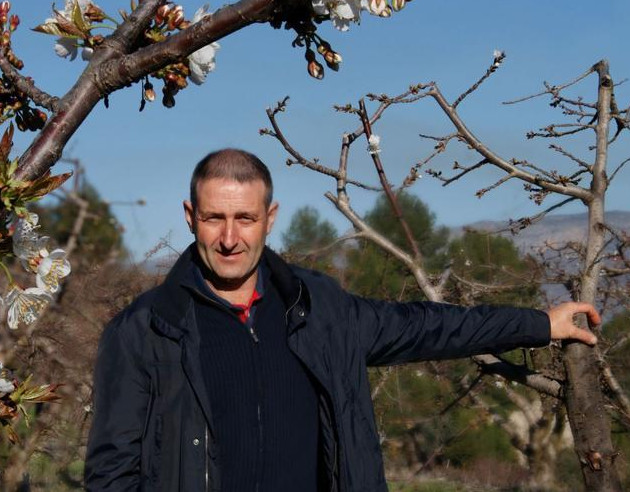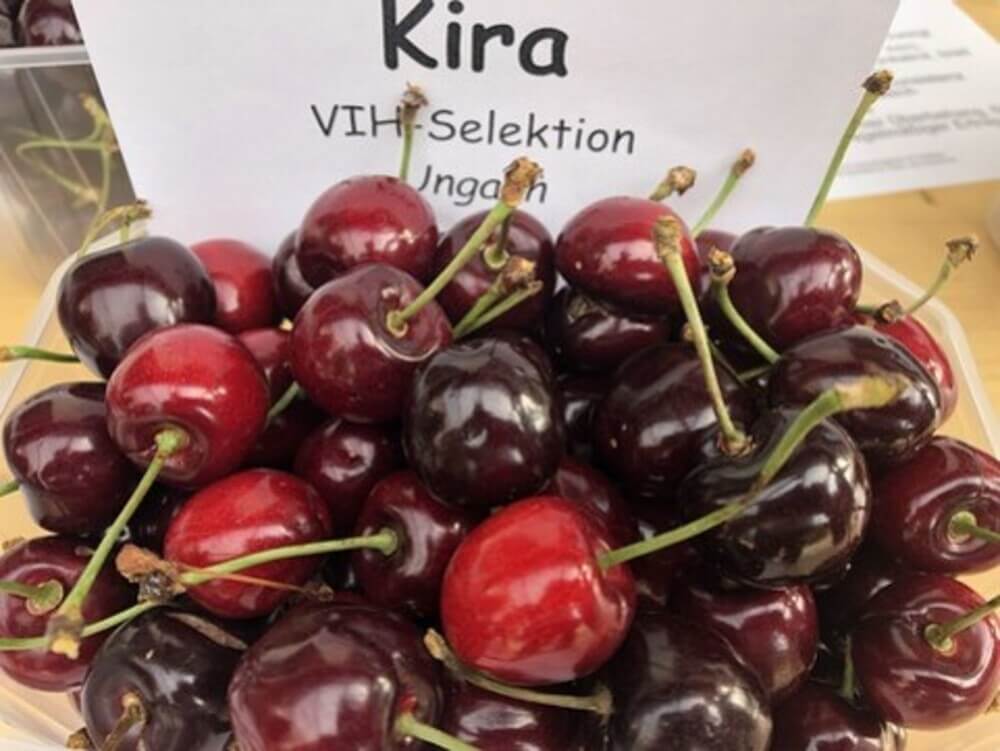Maurizio Vezzali farm is a farm located in the province of Modena (Italy) that manages over 40 hectares of land divided between the towns of Vignola, Spilamberto and Marano, of which 25 hectares are entirely dedicated to the production of cherries. The owner of the company, Maurizio Vezzali, spoke for Cherry Times.
How is the varietal subdivision handled? Are we talking about early, medium and late varieties?
About the varietal discourse, in the most recent plantings I have relied on the Sweet series. So we are talking about Sweet Aryana (5-6 hectares), Sweet Lorenz (2 hectares), Sweet Saretta (3 ½ hectares). But apart from those I also have other varieties such as Frisco (2 hectares) or simply older varieties such as Ferrovia or Lapins, which I still think are very good. As for the late varieties, I have Staccato.
Among the older varieties there are also Bigarreau and Giorgia, but I have to say that they are among the most unmanageable varieties to date.

Again, some of the grafted varieties include Nimba and Red Pacific. For Red Pacific we are talking about a really good product, but unfortunately it is really susceptible to cracking.
Precisely for this reason I have been thinking lately about grafting varieties such as Henriette and Regina also with regard to cracking. These are definitely more resistant varieties to cracking, not to mention the self-pollination factor.
What about implants?
I must say that of the implants I have, some are rented, but we are still talking about facilities that are now of a certain age.
For the rest, I don't have, for example, a lot of covered area. I cover a very small part with rain covers.
As far as rootstocks are concerned, however, I use Colt. So far it is the one that has given the least amount of problems, along with a better yield. Unfortunately, here in our area it's not like in Trentino Alto Adige (IT), where rootstocks such as Gisela really give great results, but combined with a different climate.
I am convinced that dwarfing rootstocks are the future, but unfortunately it is not convenient to use them here. Instead, I prefer a bit of vigour for the plant. You also have to consider that here in the area, producers often don't only deal with cherries and, once the harvest period is over, you are always busy with other products and harvests. A little extra vigour certainly helps the plants.
One problem that many people don't think about is mice. Lately it has been difficult, especially with rootstocks like Colt. Another rootstock that is sensitive to mice is Maxma 60.

What is the seasonal production?
In recent years we have delivered a substantial supply to the cooperative, we are talking about 170 tonnes of product. This year, however, as we know, has been quite difficult. We started with the harvest on 14 May, but had to stop almost immediately. Compared to previous years, we are about 30 per cent of total production.

What are some critical issues and problems that you are experiencing? In your opinion, how can they be solved?
The main issue, the one that has been particularly accentuated in recent years, is that of manpower. This year we really thought we couldn't find enough. With the area I have, I need about 50-60 people during the harvest period. It is not easy to always find the right number of people.
I think it's not like years ago, when farms were looked after more by the family. Now the farms, especially in Vignola, are not so big, and the family aspect is less and less with time. We always have to consider the adoption of labour.
Unfortunately, however, there are several problems from that point of view as well. One of them, for example, is the fact that labour is often not specialised. This will certainly lead to new assessments in the future, especially from the point of view of plant and equipment.
For example, one aspect that is little considered is that of the collection carts. With unskilled personnel, it becomes necessary to use simple equipment that can also be used by people who, in most cases, are approaching collection for the first time.
Another aspect could be precisely that of planting. Dwarfing rootstocks, as mentioned earlier, will be the future, but along with new rootstocks, perhaps it would be good to consider new applications for cover crops that are easier to manage and less expensive in general. Integration in this sense I believe would be much more efficient.
Another factor on which a lot of work has been going on in recent years is definitely the variety factor. I am sure that in the future there will be much more resilient and hardy varieties than there are today, certainly a very important aspect that would solve many of today's problems.
The last aspect that I consider very important is that of the market. Right now, especially in Vignola, there is a lot of talk about the idea of the cherry as a niche product, restricted to our area. Unfortunately, for years now, we can no longer do this kind of reasoning.
Just to give an example, years ago, no one expected countries like Uzbekistan or Turkey to become among the largest producers or exporters of cherries in the world. But the reality of the facts is this, we are in a global market and we must necessarily adapt to this way of thinking. A look into the future is a must.
This means, however, that we must not only talk about quality. I don't even have to say it, quality is essential, but in order to achieve satisfactory numbers there must also be a critical mass of production. The future, including that of producers here in Vignola, I believe will be rosier if instead of working as individuals, we work as a district or consortium.
For this, the presence of the municipality could be central. If we really want to preserve Vignola as the city of cherries, and help the producers and our territory, I believe it is necessary for the municipality too to support the cherry.
Cherry Times - All rights reserved














